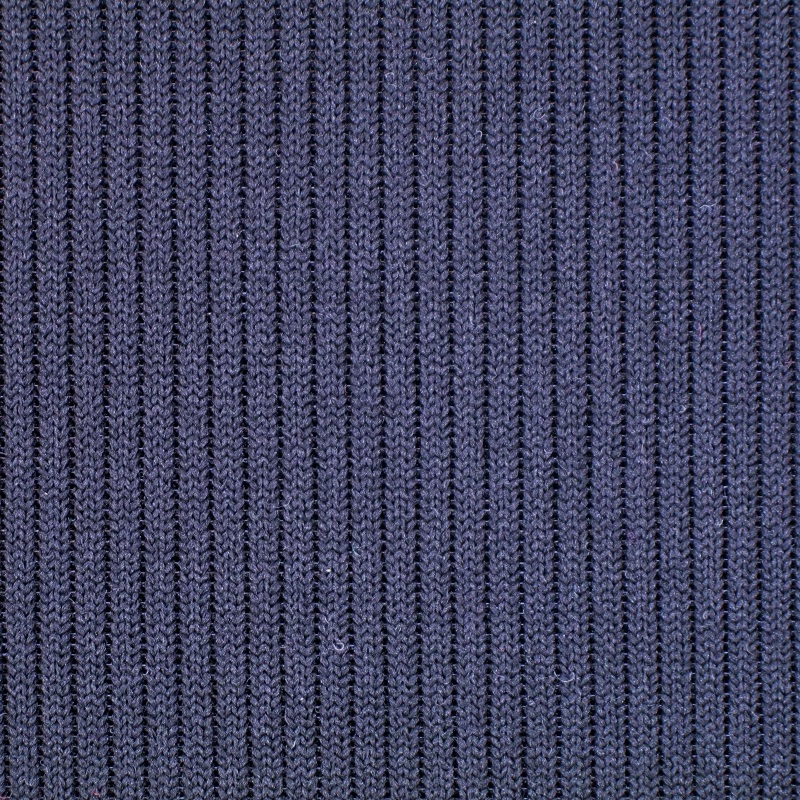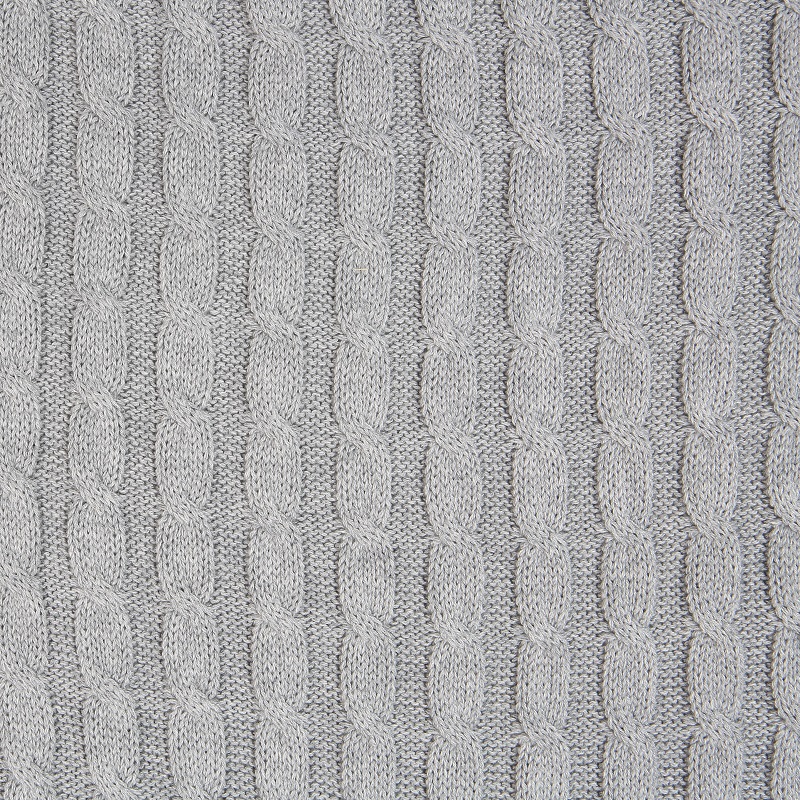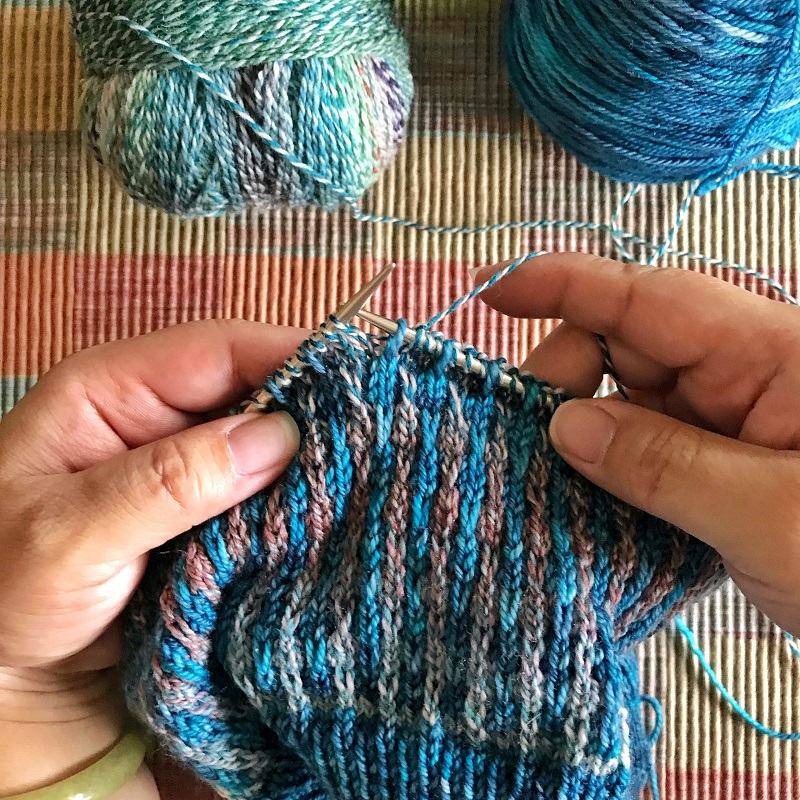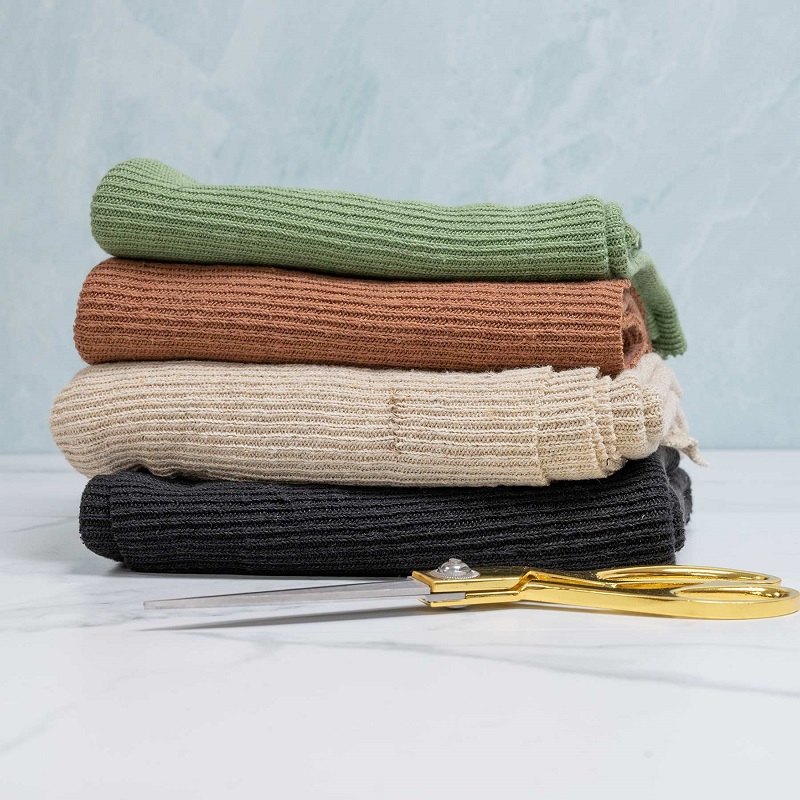Knit fabric is a versatile and popular material used in a wide range of garments and textiles. Unlike woven fabrics, knit fabrics are created through a process of interlocking loops of yarn or thread, which gives them unique properties and advantages. This comprehensive guide will delve into the various aspects of knit fabric, including its types, characteristics, advantages, and common uses. Understanding knit fabric will help you make informed decisions when selecting materials for sewing, fashion design, or other textile applications.
The Basics of Knit Fabric
Understanding the Knitting Process
Knit fabric is produced using a process called knitting, where yarns are interlaced in a series of loops. This process creates a fabric with a lot of stretch and flexibility, as opposed to woven fabrics, which are created by interlacing yarns in a crisscross pattern. Knitting can be done by hand or machine, and it involves creating rows of interlocking loops to form the fabric.
The knitting process involves two primary types of stitches: knit stitches and purl stitches. Knit stitches are created by pulling the yarn through a loop from the front, while purl stitches are made by pulling the yarn through from the back. These stitches can be combined in various patterns to create different textures and designs in the fabric.
Key Characteristics of Knit Fabric
Knit fabrics are known for their distinctive characteristics. They have a natural stretch and elasticity due to the interlocking loop structure, which allows them to expand and contract without losing their shape. This makes knit fabrics ideal for garments that require flexibility, such as t-shirts, sweaters, and leggings.
Another key characteristic of knit fabric is its ability to recover its shape after stretching. This property is particularly useful in activewear and athletic clothing, where movement and comfort are essential. Additionally, knit fabrics are generally softer and more comfortable against the skin compared to woven fabrics, making them a popular choice for casual and everyday wear.

Types of Knit Fabric
Jersey Knit
Jersey knit is one of the most common types of knit fabric and is widely used in everyday clothing. It is characterized by its smooth, flat surface on one side and its textured, slightly bumpy surface on the other. This type of knit fabric is known for its soft feel and good drape, making it a popular choice for t-shirts, dresses, and other casual wear.
Jersey knit is created using a single knit stitch, which results in a fabric that is stretchy and has a moderate amount of give. It is usually made from cotton or a cotton-blend yarn, although it can also be found in synthetic fibers. Jersey knit fabric is relatively easy to sew and handle, making it a favorite among home sewists and garment makers.
Rib Knit
Rib knit fabric features a distinct pattern of alternating raised and recessed lines, which create a ribbed texture. This texture is achieved by alternating knit and purl stitches in the fabric. Rib knit fabrics are known for their excellent stretch and recovery, making them ideal for cuffs, collars, and fitted garments.
Rib knit is commonly used for items such as sweaters, knitwear, and activewear. The ribbing provides a snug fit and helps the fabric retain its shape, which is particularly useful for garments that need to conform to the body. Rib knit fabrics are often made from cotton, wool, or synthetic fibers, and they can be found in various weights and widths.
Interlock Knit
Interlock knit is a type of double-knit fabric that is created by knitting two layers of fabric together. This results in a fabric that is thicker, more stable, and has a smooth surface on both sides. Interlock knit is known for its durability and excellent drape, making it suitable for a wide range of garments.
Interlock knit is commonly used for items such as polo shirts, baby clothes, and activewear. The double-knit structure provides additional warmth and insulation, which makes it a good choice for cooler weather clothing. Additionally, the fabric’s smooth surface and consistent texture make it ideal for garments that require a polished appearance.
Advantages of Knit Fabric
Stretch and Flexibility
One of the primary advantages of knit fabric is its inherent stretch and flexibility. The interlocking loop structure allows the fabric to stretch in multiple directions, providing a comfortable fit and ease of movement. This property is especially important for activewear, sportswear, and other garments that require a high level of mobility.
The stretch of knit fabric also helps it conform to the body’s shape, which can enhance the fit and appearance of the garment. Additionally, the fabric’s ability to recover its shape after stretching ensures that it maintains its appearance and functionality over time.
Comfort and Breathability
Knit fabrics are known for their softness and comfort against the skin. The interlocking loop structure creates a fabric with a smooth surface that feels gentle and non-irritating. This makes knit fabrics ideal for everyday wear and garments that come into direct contact with the skin.
In addition to comfort, many knit fabrics are also breathable, allowing air to circulate and help regulate body temperature. This property is particularly beneficial for activewear and summer clothing, where ventilation and moisture-wicking are important for maintaining comfort and preventing overheating.
Versatility in Design
Knit fabrics offer a high level of versatility in design, allowing for a wide range of patterns, textures, and finishes. The ability to create various knit stitches and combine them in different ways opens up numerous design possibilities. This versatility makes knit fabrics suitable for a variety of garments, from casual wear to formal attire.
Additionally, knit fabrics can be easily dyed and printed, which further enhances their design potential. Whether you’re looking to create simple, classic pieces or elaborate, fashion-forward designs, knit fabrics provide a flexible and adaptable medium for your creative vision.

Common Uses of Knit Fabric
Everyday Wear
Knit fabrics are commonly used in everyday clothing due to their comfort and flexibility. Items such as t-shirts, sweatshirts, and leggings are typically made from knit fabrics because they offer a relaxed fit and ease of movement. The softness and stretch of knit fabrics make them ideal for casual and leisurewear.
Knit fabrics are also popular for undergarments and sleepwear, where comfort and softness are essential. The ability of knit fabrics to stretch and conform to the body’s shape makes them a natural choice for garments that require a snug fit.
Sportswear and Activewear
The stretch and flexibility of knit fabrics make them well-suited for sportswear and activewear. Garments such as athletic shorts, yoga pants, and workout tops are often made from knit fabrics because they provide the necessary freedom of movement and comfort during physical activity.
Knit fabrics used for activewear are often engineered with additional features such as moisture-wicking properties and enhanced breathability. These properties help keep the wearer cool and dry, improving performance and comfort during exercise.
Home Textiles
In addition to clothing, knit fabrics are also used in various home textiles. Items such as blankets, throws, and pillow covers can be made from knit fabrics to provide a soft and cozy feel. The stretch and durability of knit fabrics make them suitable for home decor items that require both comfort and resilience.
Knit fabrics are also used for upholstery and drapery, where their ability to conform to different shapes and surfaces can be advantageous. The versatility of knit fabrics in home textiles allows for a wide range of design options and applications.
Care and Maintenance of Knit Fabric
Washing and Drying
Proper care and maintenance are important for preserving the quality and longevity of knit fabrics. Most knit fabrics can be machine washed, but it is important to follow the care instructions provided by the manufacturer. To prevent stretching or distortion, wash knit fabrics in cold water and use a gentle cycle.
Avoid using high heat when drying knit fabrics, as this can cause shrinkage or damage. It is best to air dry knit garments by laying them flat on a clean, dry towel. If machine drying is necessary, use a low heat setting to minimize the risk of shrinkage and ensure the fabric retains its shape.
Storing Knit Fabric
When storing knit fabrics or garments, it is important to avoid hanging them for extended periods, as this can cause stretching or distortion. Instead, fold knit garments and store them in a cool, dry place. Use acid-free tissue paper or fabric bags to protect the garments from dust and moisture.
For long-term storage, consider using garment bags or vacuum-sealed bags to keep knit fabrics in good condition. Avoid storing knit fabrics in direct sunlight or areas with high humidity, as these conditions can cause fading or deterioration over time.

Conclusion
Knit fabric is a versatile and popular material with a wide range of applications. Its unique properties, including stretch, flexibility, and comfort, make it an excellent choice for various types of clothing and textiles. By understanding the different types of knit fabric, their advantages, and common uses, you can make informed decisions when selecting and working with knit materials. Whether you are a fashion designer, home sewist, or textile enthusiast, knit fabric offers a wealth of possibilities for creating stylish and functional garments and home textiles.









